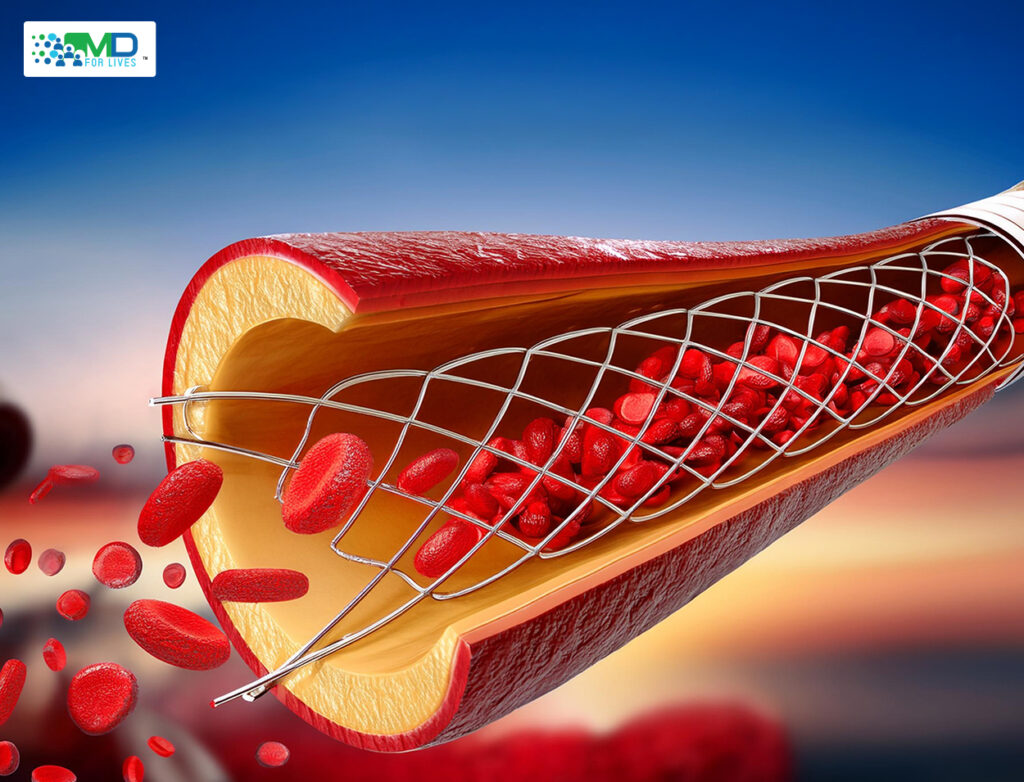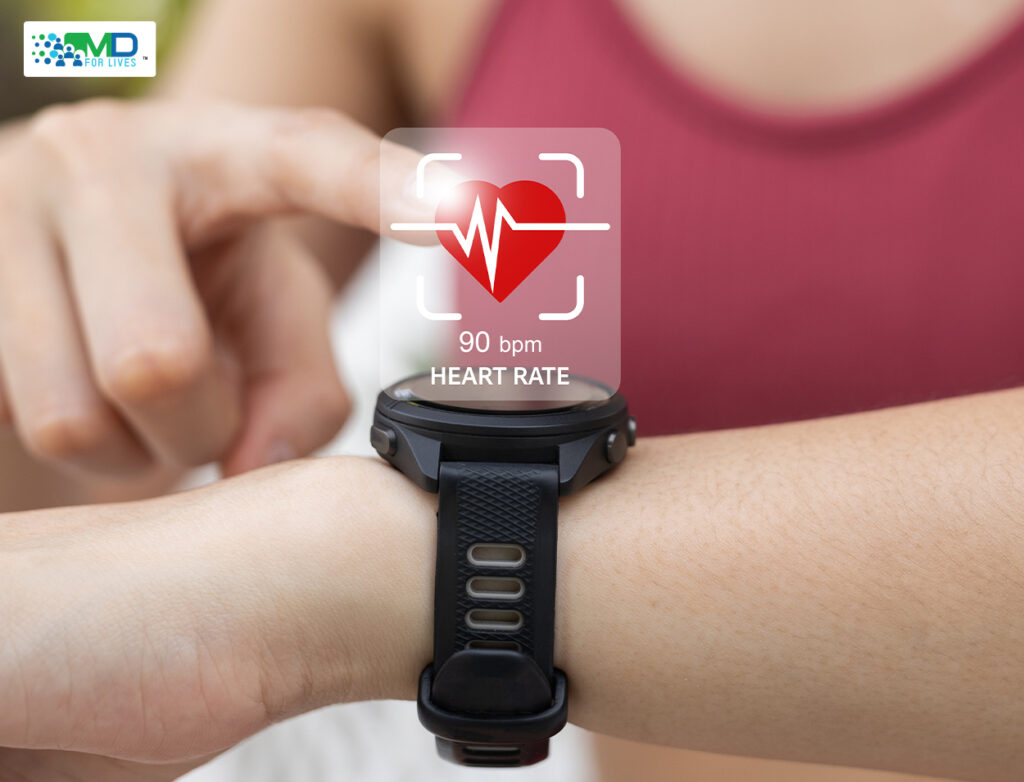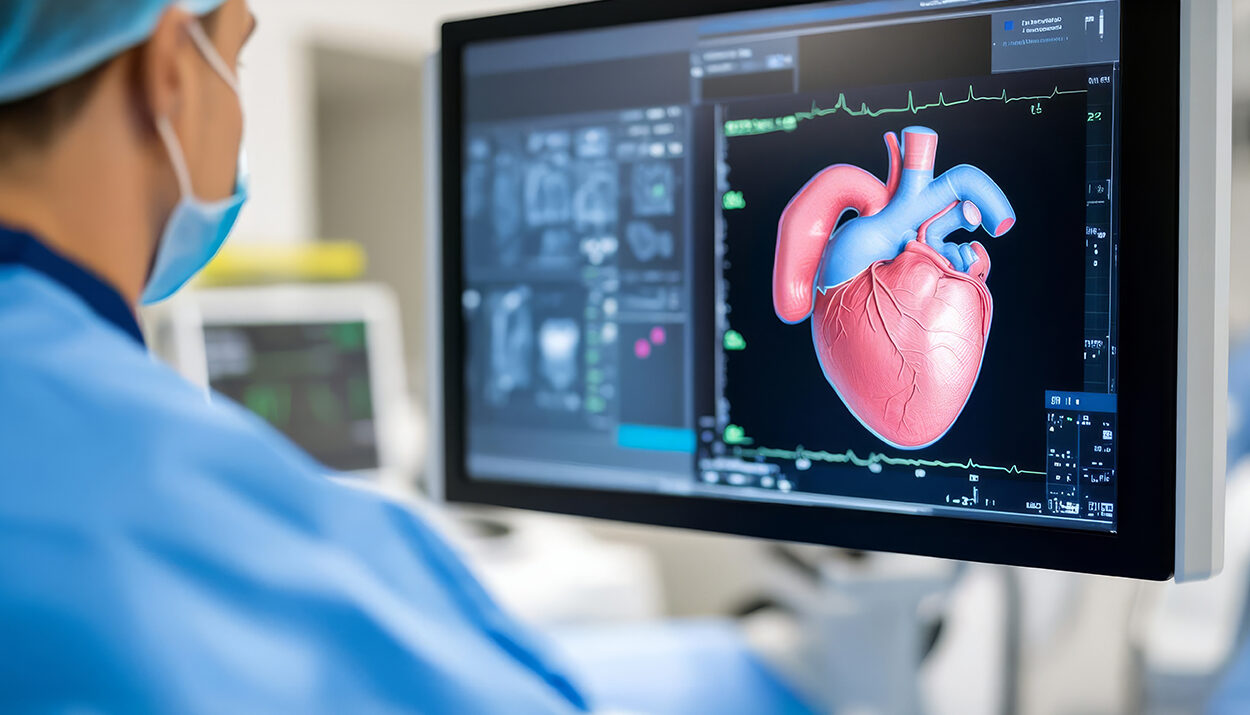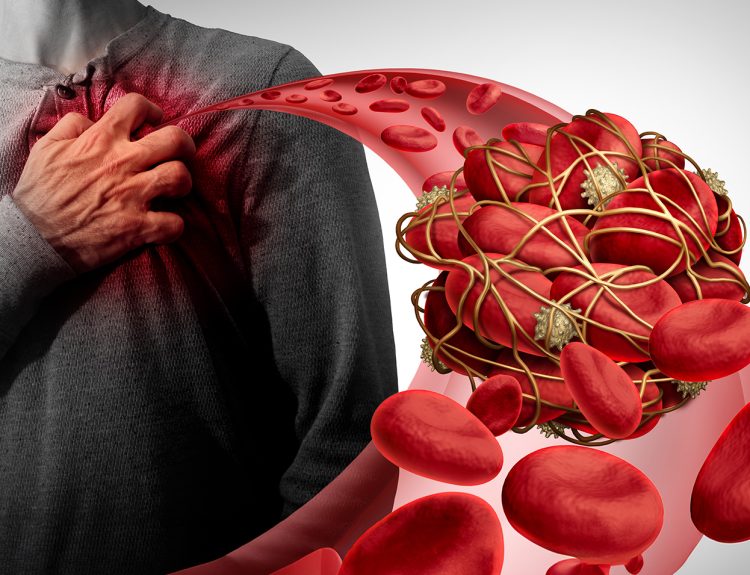The field of Interventional Cardiology has experienced rapid progress, all thanks to technological breakthroughs and dynamic patient needs. As per reports published by Market Research Future, the Interventional Cardiology market industry is expected to grow from $23.18 billion in 2023, and reach a whopping $35.0 billion by 2032. The future of interventional cardiology stands on the pillars of AI-powered diagnostics, next-gen stents, catheters, and minimally invasive procedures.
However, these innovations don’t merely rely on advanced research and development. Rather, these rely on practical insights from healthcare professionals through rigorous market research.
But, how does market research play a pivotal role in sculpting the future of interventional cardiology? Along with that, how do platforms like MDForLives help in this discourse? Let’s take a tour of this blog to know it all!
Trends & Innovations Influencing the Future of Interventional Cardiology
Advancements in the field of Interventional cardiology are built on the foundational pillars of revolutionary innovations.
Let’s take a look:
1. Minimally Invasive Procedures
Techniques like Transcatheter Aortic Valve Replacement (TAVR) and Percutaneous Coronary Interventions (PCI) serve as the harbingers to substantially improve patient outcomes. These procedures bring about multifaceted benefits. They help minimize surgical trauma, reduce recovery times, and enhance overall patient comfort. This radical shift towards less invasive methods have revolutionized cardiac care and has offered patients a better quality of life.
2. AI & Robotics in Cardiology
The integration of AI and robotics has also been instrumental in shaping the future of interventional cardiology. AI-assisted imaging has improved overall diagnostic accuracy. This has eventually enabled cardiologists to visualize and assess cardiac structures with unparalleled precision.
Additionally, the rise of robotic-assisted procedures has brought about significant developments in surgical precision and control, resulting in better patient outcomes. On top of that, machine-learning-based risk assessments are helping to effectively predict patient outcomes and personalize treatment strategies accordingly.
Such a data-driven approach has led to the rise of more proactive and targeted interventions.
3. Next-gen Stents & Catheters
Next-generation stents and catheters are also bringing in substantial innovations in the field. Wondering how?

Well, advances in bioresorbable scaffolds are the first instance. These new-age stents dissolve over time and help mitigate the risk of long-term complications associated with traditional stents. Furthermore, drug-eluting stents, which release medication to prevent restenosis, have significantly enhanced patient outcomes after angioplasty. Added to that, breakthroughs in nanotechnology enabled the development of more targeted and effective cardiovascular interventions, which ultimately resulted in enhanced patient safety.
What’s The Role of Personalized Medicine?
The role of personalized medicine is undeniable when it comes to interventional cardiology. Why? That’s because data-driven approaches are leading to patient-specific interventions. This, in turn, allows cardiologists to tailor treatments based on individual patient characteristics. Such a personalized approach helps optimize treatment outcomes and improve overall patient care.
The future of interventional cardiology is being shaped by these trends, promising more
effective and patient-centered care.
Role of Market Research in the Development of Cardiology Tools
Market research plays a pivotal role in the development of cardiology tools. Feedback from healthcare professionals, gathered through medical surveys and focus groups, helps identify gaps in current devices and procedures. This feedback eventually helps manufacturers come up with solutions that address the challenges faced by cardiologists in their daily practice. Such a collaborative approach ensures that the new tools being developed are both relevant and effective.
Improvements in the overall safety and performance of a device is another crucial aspect that’s fulfilled via market research. Real-world data, gathered from clinical trials and post-market surveillance, is essential for the refinement of existing tools and ensures long-term efficacy. This data helps identify potential safety issues, optimize device design, and enhance patient outcomes. By incorporating real-world evidence, manufacturers can create safer and more reliable cardiovascular innovations.
Other than these, regulatory and market insights are also essential for successful device development. Market research helps companies understand and adhere to FDA approvals, CE certifications, and global compliance standards. A thorough understanding of regulatory requirements and market trends helps manufacturers streamline the approval process and
bring innovative cardiology tools to patients more quickly.
Not just that, but market research also helps connect R&D and clinical practice. It makes sure that new innovations perfectly align with practical, real-world applications in hospitals and catheterization labs. Acquiring feedback from cardiologists throughout the development process thereby assists manufacturers to create tools that are technically advanced, user-friendly, and clinically effective.
This collaborative approach ensures that new technologies are seamlessly integrated into existing workflows, improving patient care and optimizing clinical outcomes.
Physician Insights: The Secret Behind Advances in Interventional Cardiology
The advancement of interventional cardiology relies heavily on the hands-on expertise of cardiologists. R&D teams and medical device manufacturers understand that theoretical models alone cannot capture the complexities of real-world clinical scenarios. That’s exactly why a cardiologist’s firsthand experience serves as a necessary element in the process. Their observations provide insights into device usability, performance, and patient safety as well. This is critical for the development of effective and innovative solutions.
Additionally, this direct feedback loop ensures that new technologies aren’t just scientifically sound but also practically applicable.
Case Studies:
Now, let’s take a look at some practical instances to understand how a cardiologist’s insights have been the driving force behind advancements in interventional cardiology:
Instance I: Bioresorbable Stents
Earlier iterations of bioresorbable stents faced limitations in flexibility and deliverability. It was because of the direct input of healthcare professionals that led to significant design improvements. Thereafter, bioresorbable stents emerged, with better performance and expanded clinical utility.
Instance II: Radial vs. Femoral Access
Similarly, the shift towards radial arterial access over femoral access was largely encouraged by clinical data and practitioner insights. A healthcare professional’s observations about reduced bleeding complications and improved patient comfort played a pivotal role in this procedural change.
Real-world challenges are radically different from theories and often demand creative solutions. A cardiologist’s input, therefore, stands crucial in this process. Their insights help refine device usability and ensure that the tools are intuitive and efficient in the fast-paced cath lab environment. Device durability is another essential factor, and there too, a professional’s feedback is needed to prolong its lifespan and reduce complications. Ultimately, a cardiologist’s input directly impacts patient outcomes and ensures that new technologies are safe, effective, and tailored to the unique needs of cardiac patients. This
collaboration between physicians and manufacturers is essential for the development of new technology in cardiology.
Challenges & Opportunities in the Advancement of Cardiac Devices
The journey towards advancements in cardiac devices is paved with immense potential. However, there also lie significant hurdles that need to be addressed.
1. Technological Barriers
Integration of AI, robotics, and nanotechnology into cardiac devices presents some serious technical hurdles. That’s because real-world applications demand seamless functionality and guaranteed reliability. The development of algorithms for precise AI-driven diagnostics requires vast datasets and complex computational models. Moreover, scaling nanotechnology for widespread usage involves intricate manufacturing processes and biocompatibility tests. To overcome these complexities, companies need to make these technologies clinically viable.
2. Regulatory and Ethical Considerations
Medical device development in cardiology requires adherence to complex regulatory and ethical landscapes. Because at the end of the day, ensuring patient safety and device efficacy is the ultimate goal. Stringent clinical trials and rigorous testing are necessary for regulatory approvals. However, such procedures can be time-consuming and costly. Along with that, ethical considerations, like data privacy, informed consent, and equitable access, also play a pivotal role. Balancing innovation with safety and ethical responsibility stands crucial for sustainable progress.
3. Cost vs. Accessibility
One of the major challenges is to balance cutting-edge developments with affordability and accessibility. Advanced cardiac devices often come with high costs, which limit their availability in resource-constrained settings. Therefore, cost-effective manufacturing processes, streamlined supply chains, and development of sustainable healthcare models are essential to ensure that these life-saving technologies are accessible to patients. This involves collaborative efforts between manufacturers, policymakers, and healthcare providers to create equitable access to advanced cardiac care.
4. Opportunities for Future Growth

The advent of telehealth, wearable cardiac monitors, and smart implantable devices presents significant opportunities for future growth in cardiac care.
● Telehealth helps expand access to remote cardiac care, particularly for patients in underserved areas.
● Wearable monitors enable continuous monitoring and early detection of cardiac events, thereby improving proactive management.
● Smart implantable devices offer personalized treatment and real-time data collection, which ultimately enhances patient outcomes.
These technologies have the potential to revolutionize cardiac care by making it more accessible, personalized, and efficient.
Cardiologists and Market Research: How Can They Revolutionize the Future
Cardiologists are not mere passive observers in this whole journey! Rather, their engagement in market research has a direct influence on the future of cardiology.
1. Participating in Clinical Trials and Research Panels
Cardiologists directly influence product development through taking part in clinical trials and research panels. Their firsthand experience with new devices and procedures provides crucial feedback on design, usability, and safety. This input helps companies refine device designs, improve their usability, and ensure maximum safety.
A healthcare professional’s insights play a vital role in the development of the next generation of cardiac tools. This makes the devices more effective and patient-centered, and ensures that the innovations meet the practical needs of the field.
2. Advisory Roles in Medical Device Companies
Cardiologists can collaborate closely with manufacturers and regulators by taking on advisory roles. This collaboration allows them to share their clinical expertise, which influences device design and regulatory pathways. They help provide insights on real-world needs and challenges, and make sure that new products are clinically relevant and safe. This partnership between physicians and industry is essential for driving innovation in cardiac devices.
Thinking, how? Well, it helps bridge the gap between theoretical development and practical application. This eventually leads to more effective patient outcomes.
3. Leveraging Digital Platforms for Feedback
Virtual research communities and digital health tools are substantially transforming how physicians contribute to cardiology market research. Online forums, medical surveys, and remote monitoring tools enable efficient data collection and feedback sharing. These platforms enable doctors to provide input from anywhere, at any time, thereby increasing participation and accelerating product development.
This digital approach helps improve the design and usability of cardiac devices and allows for broader input from a diverse pool of professionals.
4. The Power of Data Sharing and Collaboration
Global networks of cardiologists are influencing progress through shared insights. Through sharing data and collaborating on research, professionals help accelerate the development of new treatments and technologies. This collective knowledge base allows for faster identification of best practices and enables the development of innovative solutions.
Collaborative efforts across different regions and institutions help standardize care and improve patient outcomes worldwide. Ultimately, this creates a more cohesive and efficient approach to advancing cardiac care.
Need of the Hour? A Collaborative Approach!

The future of interventional cardiology heavily relies on the active participation of the frontline practitioners. To come up with more advanced cardiac care devices and solutions, their participation in market research, advisory roles, and clinical studies stands paramount. That’s because only a collaborative approach fosters connection among physicians, innovators, and patients alike.
So, the evolution of cardiac care, or any healthcare service for that matter, isn’t a one-man show. Instead, it is a collective endeavor that thrives on the synergy of shared knowledge and collective action to create comprehensive solutions. Hence, if you are amongst the new-age cardiologists who’s determined to enhance patient outcomes, register with us and join hands for a better future!
FAQs
1. What are the new advances in Interventional Cardiology?
New advancements include AI-powered diagnostics for precise imaging and risk assessment. It also includes next-generation stents and catheters using bioresorbable materials and nanotechnology; and minimally invasive procedures like TAVR and robotic-assisted interventions.
2. How big is the Interventional Cardiology Market?
According to reports, the interventional cardiology market is projected to reach approximately $35.0 billion by 2032 from $23.18 billion in 2023.
3. Is Interventional Cardiology the Future?
Yes, interventional cardiology is a key component of the future of cardiac care. It offers less invasive treatment procedures and improved patient outcomes compared to traditional surgeries. The continuous development of new technologies further solidifies its role in the future of interventional cardiology.
4. What is the CAGR of Interventional Cardiology?
The interventional cardiology market CAGR between 2023 and 2032 is expected to be around 4.69%.
External References:
- https://www.marketresearchfuture.com/reports/interventional-cardiology-
market-8735 - https://www.nhlbi.nih.gov/health/tavr

MDForLives is a vibrant community of healthcare professionals and patients dedicated to shaping the future of healthcare. We provide valuable global insights to healthcare companies through online surveys, interviews, and discussion forums.






